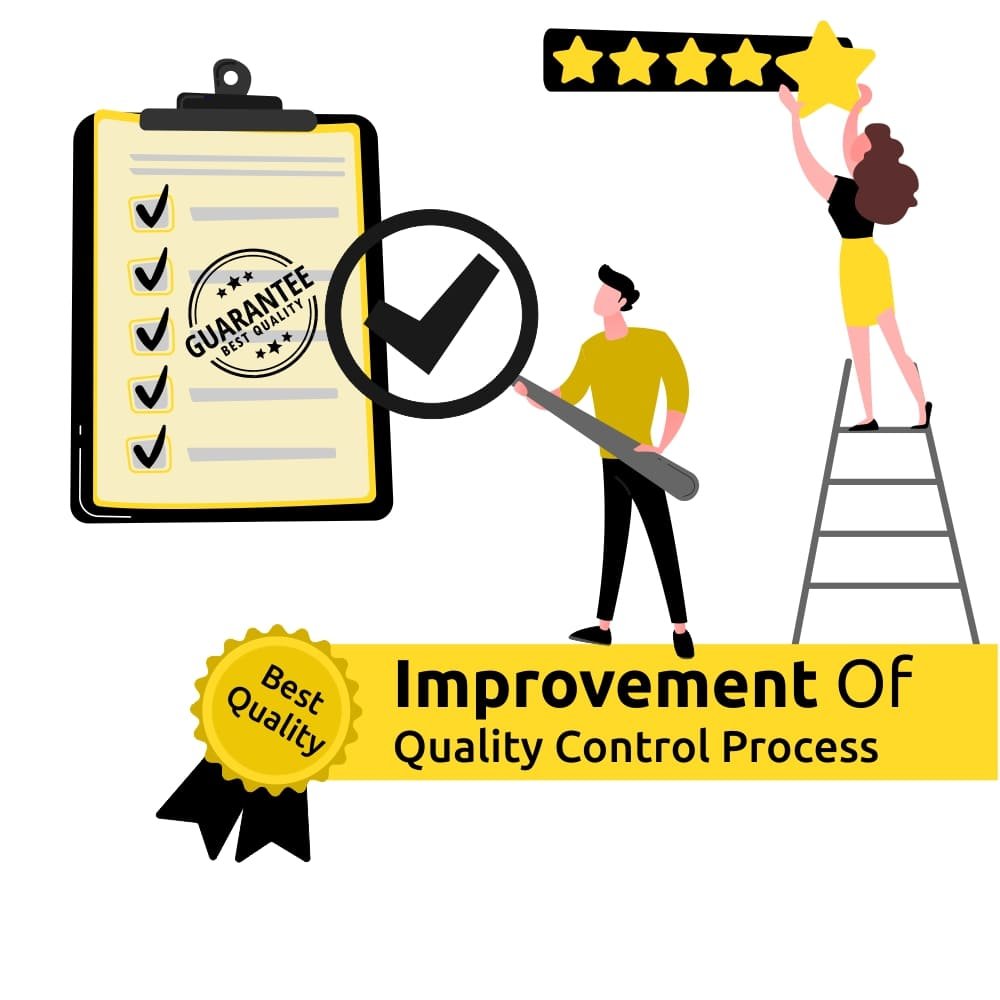
How to Improve Quality Control Methods or Process-2021?
Find out how you can improve your quality control method or process so that your garments get the right fit. Today’s consumers becoming more aware of what they are buying, they pay more attention than ever to the style but quality of their purchases. They also attach great importance to value for money and whether the garments are made to the highest possible standards.
This is especially true when fast fashion creates a nearly unlimited product flow and is thrown out of season and topped with inconsistent, low-quality materials.
Perhaps the first step is to do thorough research to ensure you are working with a reputable, ethical factory with no guarantees to minimize quality issues in the future. It is more than likely that a factory that offers fair wages and working conditions will not want to sacrifice quality for profit at its customers’ expense, hence your production.
However, most manufacturing companies or design teams struggle with quality issues (e.g., quality completions) at some point in production, especially in the early stages where they continue to test suppliers, factories, materials, or develop new products.
The more pieces a style has, the more hours and skillful hands it takes to create them, and the more details we need to review. In addition to choosing the best possible factory, fabrics, and materials, other properties can significantly improve the quality of your clothing.
And so often, experienced designers forget about this essential element. This can make the difference between someone who pokes fun at your products for a long time or loses them within seconds.
These great tips will make sure they are a good fit for your product, and we will walk you through how to do it step by step. How to use Tech pack to help with quality control too:
1) Quality control – Provision of concessions for the measurement of garments
Remember that apart from any computer-aided design sketches, the garments are hand-softened during the production phase. Unlike other products, the garment manufacturing process doesn’t benefit from full end-to-end automation, at least not yet.
Also, inconsistencies are more common in clothing specifications than in other products. Each clothing style has different characteristics, such as B. special constructions, different weight, fabric cover or different body types, etc.
To create the size measurement tables, you need to specify a tolerance that allows a small error margin.
Therefore, if you create size measurement tables in your own style, you must specify a tolerance for each measurement point. Since perfection is impossible in clothing, tolerance allows for a small margin of error, a more or less acceptable measurement that meets quality standards.
Therefore, if you create size measurement tables in your own style, you must specify a tolerance for each measurement point. Since perfection is impossible in clothing, tolerance allows for a small margin of error, a more or less acceptable measurement that meets quality standards.
Measurements Concessions are usually made available to manufacturers or quality assurance professionals via measurement tables in style tech packs.
2) Add a “suitable” column to the measurement table to analyze the samples for quality control
You can create tabs for each measurement point (POM), e.g., B. sleeves, neckline, back, etc. Then you can make changes to any card related to the entire garment as you may only need to change one specific measure.
Switch to stacked measurement cards displayed in tabular form to make it easy to inspect garments.
Once you have a suitable sample from the manufacturer, you can add a custom column and record the actual measurements. Your team can see this update in real-time when working remotely.
You can enter the quality control measurements of a specimen and compare them to the table’s initial measurements and check that each dimension is within tolerance.
For this reason, the presence of maps (different “lines” in the list view) makes the process much easier: once you use an image and design all the measurement specifications with dimensions and notes, the map editing is less That’s simple: You risk using it Being soaked with notes or not being clear about where the boss needs adjustment and confusing your team.
Suppose you have to process collar scraps for a shirt. So all you have to do is change the card (or line) containing the collar, not the whole card for the shirt. This also helps in quality control, capturing any details that may appear in the tailoring of the collars in the future.
3) Automated changes and notes for quality control
Of course, if your QC team or inspector detects a significant deviation from the tolerances, the measurements need to be adjusted.
If your size is outside the specified concessions, it can be a serious quality control issue as it is likely that many other garments of that particular style or size may vary.
When a factory makes changes, technology designers can be reminded of any customization issues that arose in the first process, allowing better communication between all teams.
When you send the final Tech Pack to the factory later, you can hide the “Fit” column as you don’t need to see the quality tested part and can only work with the final dimensions.
Related: 3 Tips for Writing Measurement Specifications for quality control
Place the garment on a flat surface so that it can be measured more accurately.
Introduce measurements for all sizes. It’s also a great way to use the technical pack and get used to the sizing.
Make sure it is flat but that the garment does not extend beyond its “natural” shape in any way. This will give wrong results and will lead to all elasticity measures in the end.
Measure before placing the garment on a model or mannequin.
When measuring the fabric’s openings, make sure they are tiled so that the seams are not at the ends.
Read more at studio.graphtick.com

0 comments